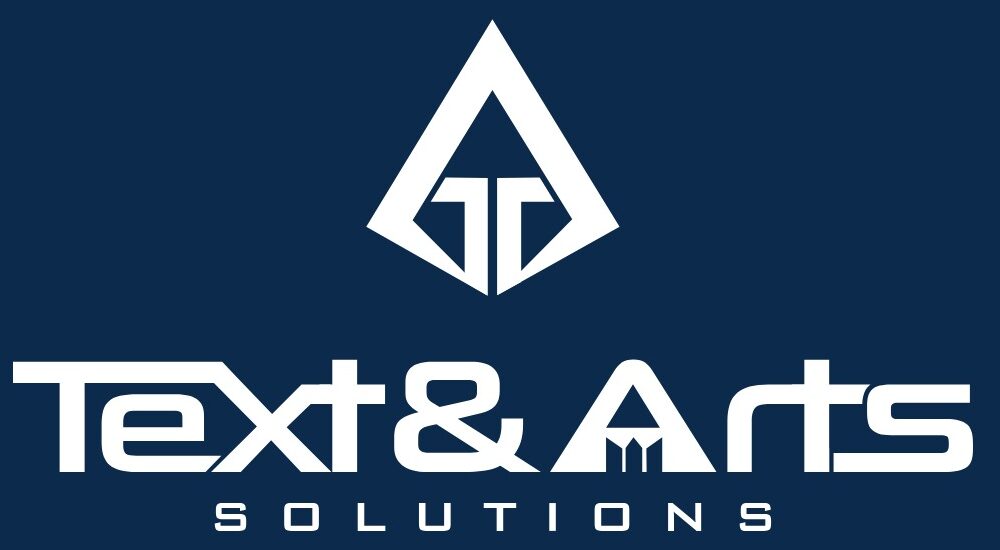Introduction
If you’ve ever wondered why your perfectly “translated” copy still fails to resonate in India, here’s the truth: machines translate; humans localize. And nowhere is this difference more decisive than in the subcontinent’s maze of scripts, dialects, cultural codes, and domain-specific usage. That’s why human localization for Indian languages consistently outperforms even the smartest AI.
After working for six years across education, BFSI, government, entertainment, and tech, I’ve seen this again and again. On paper, AI can output endless words in milliseconds. In practice, stakeholders still call for urgent revisions—because nuance was missed, tone was off, a gesture was misunderstood, or a script rule was broken. This blog unpacks why human localization for Indian languages isn’t just “nice to have” but mission-critical—and how to build a robust, scalable workflow around it.
You’ll find real, recent examples from my projects, practical strategies you can implement this quarter, and a clear roadmap to higher engagement, fewer rollbacks, and measurable ROI in India’s multilingual market.
Why human localization for Indian languages matters more than ever
India is not one market. It’s many markets braided together by history, mobility, pop culture, and digital adoption. To communicate clearly—and persuasively—you must respect:
- Scripts (Devanagari, Bengali–Assamese, Gurmukhi, Gujarati, Kannada, Malayalam, Odia, Tamil, Telugu, etc.)
- Phonetics and orthography (matras, conjunct consonants, nukta)
- Registers (formal vs colloquial vs campaign-friendly)
- Dialects and regional synonyms (Awadhi, Bhojpuri, Maithili, Marwari, Bundeli, Kangri, Haryanvi, etc.)
- Nonverbal cues and cultural frames (gestures, humor, taboos, honorifics)
Large Language Models (LLMs) are astonishing—but they’re still pattern engines, not culture bearers. They need human intent, curation, and quality control to avoid costly misfires—especially in languages where script logic and cultural reference are inseparable from meaning.
Where human localization for Indian languages outperforms AI: five field-tested examples
Example 1: Crossword puzzles, matras, and the trap of “letter shuffling”
I recently localized a coursebook that builds cognitive skills through exercises, games, and quizzes. All smooth sailing—until the crossword and letter-based puzzles arrived.
In English, crosswords and anagrams shuffle letters to form words. But in Hindi, this logic breaks. Matras (vowel signs like “ा”, “ि”, “ु”) and conjuncts (संयुक्ताक्षर) are not free-floating letters. A matra modifies a consonant; it cannot stand alone.
- “बाल” decomposes visually into ब + ा + ल, but “ा” by itself is not a letter.
- “बिल्ली” looks like ब + ि + ल् + ल + ि, but again “ि” is not an independent letter you can shuffle like “A” or “E”.
If you port English-style letter games to Hindi without redesigning the mechanics, you confuse learners and break the learning outcome. I wrote two detailed notes to the client explaining why the puzzle itself—not just the language—had to be re-authored for Hindi.
Takeaway: Localization isn’t text replacement; it’s experience redesign. AI alone won’t flag structural incompatibilities embedded in the source design.
Example 2: There’s no uppercase/lowercase in Hindi—and no “silent” letters
English typography leans heavily on case (APPLE vs Apple vs apple). Hindi doesn’t. Whether you choose transliteration (“एप्पल”) or the native fruit name (“सेब”), case distinctions don’t exist. Similarly, Hindi orthography generally doesn’t tolerate silent letters the way English does; we write what we speak.
Why it matters:
- In UI labels, buttons, and brand guidelines, AI that “capitalizes for emphasis” can introduce inconsistency and visual noise in Hindi.
- Pseudo-English habits (e.g., Title Case) are not meaningfully portable to Devanagari.
Takeaway: Typography and casing rules must be script-aware, not copy-pasted. Humans spot and fix these issues before they become systemic.
Example 3: Culture is the canvas—word choices depend on who says what, where
Just knowing vocabulary isn’t enough. You need three kinds of expertise: (1) both languages, (2) both audiences, (3) the subject matter. Without all three, even smart people—and smart models—fail.
Consider these field examples I’ve encountered repeatedly while training/QA’ing content for India:
- “Thakur” in Bihar colloquial context may refer to a barber (a backward-caste occupation name in some locales), but “Thakur” as a caste label elsewhere signals Kshatriya/upper caste. A translation that ignores region collapses different social meanings into one misleading word.
- In parts of Bihar, “सिंघाड़ा” (Singhada) can mean samosa in everyday speech—so don’t mechanically map it to water chestnut in every sentence.
- “सीताफल” is custard apple in Marathi usage, yet some Delhi vendors call pumpkin “सीताफल.” The “right” term is context+region dependent.
- In Awadhi-speaking UP, asking for “रसगुल्ला” can get you गुलाबजामुन unless you clarify स्पॉन्ज वाला छेना. Even snack names like “सोहाल,” “नमकपारा/शक्करपारा” shuffle across micro-regions with local variations.
Takeaway: Cultural context isn’t garnish—it’s the meaning. Human localization for Indian languages ensures your content lands as intended in each locale.
Example 4: Gestures speak, too—subtitle what’s meant, not what it “looks” like
While subtitling, there was a scene with a person from Karnataka moving their head side-to-side. To outsiders, it can read like “no.” In context, it was agreement—the famous Indian head wobble with regional flavors.
A literal subtitle (“No, I disagree”) would have inverted the message. A culturally aware subtitle clarifies affirmation without over-explaining.
Takeaway: Nonverbal cues are semantics. Humans can read the room; models often can’t.
Example 5: Domain register vs metro bias—who is your reader?
On a large BFSI project (English → Hindi social copy), my reviewer (a bilingual project manager) flagged “difficult words” like “लोकप्रिय,” “निर्देश,” “बीमा राशि.” She could speak Hindi, but wasn’t fluent in written Hindi or the Hindi belt’s popular register. The target audience would understand these words instantly.
Takeaway: Reviewers and approvers must be aligned to the target reader’s literacy and register, not the reviewer’s comfort zone. Human localization considers actual audience competence; AI (and sometimes teams) default to the path of least resistance.
Strategies that make human localization for Indian languages scalable
You can’t rely on heroics and firefighting. Build systems that turn cultural nuance into a repeatable advantage.
Establish the “localization triad”: language, culture, domain
Human localization for Indian languages succeeds when translators demonstrate:
- Source language mastery (disambiguate idioms, tone, implicit references)
- Target language mastery (script rules, register control, correctness)
- Domain expertise (BFSI/legal/edtech/UX/entertainment)
Practical moves:
- Vet linguists on all three axes.
- Maintain domain glossaries with context notes, examples, and anti-patterns.
- Encourage issue logs that capture “what went wrong and why” to teach the team.
Build dialect maps and locale kits
Don’t treat “Hindi” as one. Create locale kits:
- Dialects & synonyms: e.g., उत्तर प्रदेश (Awadhi/Bhojpuri) vs मध्य भारत vs दिल्ली NCR
- Examples with usage notes: when to prefer “बीमा राशि” vs “समाश्वासन राशि,” “लाभार्थी” vs “ग्राहक”
- Red-flag terms: ambiguous or sensitive words (e.g., caste markers, food terms, festivals)
Outcome: Editors make consistent, defensible choices; juniors ramp faster; stakeholders sign-off faster.
Script-aware UX: matras, fonts, and rendering
A lot of “translation bugs” are actually rendering bugs:
- Matra placement: some fonts mishandle “ि” and conjuncts at small sizes.
- Unicode normalization: mixed code points can break search, sorting, or hyphenation.
- Line breaks: avoid awkward splits in Devanagari; test truncation rules.
- Casing: remove Title Case logic for scripts without case.
- Transliteration policy: decide when to use “एप्पल” vs “सेब” vs “Apple,” consistently.
Checklist: Validate key UI screens per script; keep a font-fallback matrix; QA across OS/browser/app shells.
Terminology and style guide discipline
Create a living style guide that codifies:
- Tone ladders (formal ↔ conversational ↔ promotional) with examples
- Do/Don’t pairs (“प्रयोक्ता” vs “यूज़र,” when to use which)
- Number/date/currency conventions per language
- Punctuation & spacing rules in Indian scripts
- Brand vocabulary (what stays in English; what must be native)
Keep it in a searchable, versioned home. Tie it to a termbase used by translators and reviewers.
Human-in-the-loop with LLMs (don’t fight the future—shape it)
LLMs are fantastic assistants when harnessed correctly.
- Constrained prompting: provide the style guide, termbase, examples, and locale notes up front.
- Chunking: feed coherent sections, not random lines, so the model respects context.
- Negative prompts: instruct what not to do (e.g., “Do not title-case Devanagari”).
- Human edit layer: linguists must review; AI drafts are starting points.
- Eval sets: build Indian-language-specific test suites (matra handling, idioms, domain terms, regional synonyms, gesture cues).
Goal: Faster throughput without losing the soul of the message.
Cultural QA & sensitivity review
Before launch, run C-QA:
- Gesture & scene checks for AV content (nods/wobbles, attire, festival depictions)
- Holiday & symbol checks (avoid scheduling mishaps; respect diversity)
- Food & caste markers (regionally sensitive labels like “Thakur,” “सिंघाड़ा,” “सीताफल”)
- Humor & sarcasm (ensure it survives the leap)
Document every decision so future teams don’t repeat the same debates.
Field testing with the real audience
Ship small. Test fast.
- A/B in two registers (neutral vs colloquial)
- Micro-surveys on clarity and trust
- Heatmaps on localized pages
- Playback analysis on subtitled clips (where do viewers drop?)
When human localization for Indian languages guides your experiments, you discover what “good” actually looks like per region.
Sector-wise playbooks for human localization for Indian languages
EdTech and assessments: redesign, don’t just translate
- Re-author puzzles that assume Latin letter behavior (crosswords, anagrams).
- Adapt rubrics for grade-appropriate vocabulary in Hindi/Marathi/Telugu.
- Audio prompts: script for phonetic clarity; avoid homophone traps.
- UI cues: ensure matra rendering is crisp at small sizes.
Outcome: Learning experiences that work—not just “read” in another language.
BFSI and insurance: register, trust, compliance
- Keep a core termbase (e.g., “बीमा राशि,” “प्रीमियम,” “नॉमिनी,” “पॉलिसीधारक”).
- Choose register intentionally: campaign copy can be lighter; policy docs must be precise.
- Localize claim flows end-to-end (tooltips, SMS, email, IVR).
- Validate with Hindi-belt reviewers, not just metro teams.
Outcome: Lower confusion, fewer escalations, stronger brand credibility.
Government, legal, and civic content: clarity over flourish
- Prefer plain, standard Hindi for citizen-facing content.
- Provide parallel English for legal names and identifiers where required.
- Normalize date, numeral, and address formats.
- Pilot with non-metro readers before statewide or national launches.
Outcome: Accessibility and adoption where it matters most.
Entertainment and subtitling: meaning beats lip-sync
- Subtitle gestures and implied consent/dissent correctly.
- Keep reading speed realistic across Indian scripts (glyph density varies).
- For comedy and idioms, transcreate, don’t transliterate.
- When names are plot-relevant, consider on-screen glossary cues sparingly.
Outcome: Audiences laugh, cry, and care—in their language.
Process blueprint: from intake to sign-off
- Discovery & audience mapping
- Who is the reader/viewer? Region, literacy level, device, context.
- Locale kit selection
- Choose appropriate dialect notes and termbase.
- Reference ingestion
- Collect brand book, tone ladder, previous translations (good and bad).
- Pilot translation + rationale
- Submit a few representative screens/pages with justification notes.
- Stakeholder calibration
- Align on register, synonyms, and “what we won’t do.”
- Production with QA gates
- Linguist → Editor → Cultural QA → Domain QA.
- Script-aware UI checks
- Font fallback, truncation, matra placement, punctuation.
- Field test
- Small launch, measure, iterate.
- Rollout + post-launch fixes
- Log edge cases for the termbase; update style guide.
Result: Fewer surprises, faster approvals, happier users.
Common failure modes (and how humans prevent them)
- Literal carry-over of English metaphors → Use culturally equivalent imagery or rewrite.
- Title Case in Devanagari → Remove; use spacing and layout to signal hierarchy.
- Incorrect pluralization → Respect target-language morphology.
- Over-Englishing technical terms → Decide a consistent policy: native term vs transliteration vs English.
- Ignoring numerals and currency spacing → Follow script conventions; test in forms and receipts.
- Gesture misreads in AV → Brief subtitlers with region notes; have a Kannada/Tamil/Telugu reviewer if needed.
- Reviewer ≠ reader confusion → Pick approvers who mirror the target audience.
Tooling that elevates human localization for Indian languages
- CAT tools + termbases: enforce terminology and segment memory.
- LLM copilots: accelerate draft creation, but keep human editors responsible.
- Automated linting: catch punctuation, spacing, numeral, and quote-mark issues.
- Screenshot diffs: visual QA for matras, line breaks, truncation.
- Subtitling platforms: control reading speed, timing, and on-screen density per script.
Measuring ROI: beyond word counts
When you invest in human localization for Indian languages, track outcomes that matter:
- Engagement: time on page, video completion, quiz success in localized edtech.
- Conversion: form completion, policy purchase, claims without clarifications.
- Support savings: fewer tickets citing “language confusion.”
- Brand metrics: trust and favorability in Hindi-belt or regional markets.
- Compliance: fewer legal/policy misinterpretations.
Tie each KPI to a pre/post localization snapshot to make the business case crystal clear.
Real-world mini case notes (from my desk)
- EdTech puzzle pack: Re-authored English-style letter games for Hindi by switching to syllable/akshara-level logic. Outcome: students solved more; teachers reported fewer “this makes no sense” moments.
- BFSI social & CRM: Locked a termbase and style ladder. When a metro reviewer flagged “लोकप्रिय/निर्देश/बीमा राशि” as too hard, we aligned on target-reader reality, not reviewer comfort. Engagement went up, not down.
- AV subtitling: Corrected “no” → “yes” wobble interpretation; synced subtitle tone with regional norms. Viewers rated “authenticity” higher.
These are not edge cases. They’re everyday realities when you operate in India.
Putting human localization for Indian languages at the heart of your content strategy
To scale across India’s markets, localization must sit upstream, not as a late-stage cosmetic patch.
- Brief for India from day one: ask “How will this idea live in Hindi/Marathi/Tamil?”
- Design for scripts: choose fonts and layouts that love matras and conjuncts.
- Budget for re-authoring: some assets (like puzzles) need mechanics changes, not just text swaps.
- Empower linguists: give access to product, not just strings in a spreadsheet.
- Institutionalize learning: every resolved debate becomes a glossary note or style-guide rule.
Partner with Text & Arts Solutions—where craft meets scale
When you need quality human localization for Indian languages, you need a team that blends linguistic mastery with product thinking. That’s where Text & Arts Solutions comes in.
What we do
- End-to-end translation & transcreation (Hindi, Marathi, Awadhi/Bhojpuri, and other Indian languages)
- Script-aware UX localization (matras, conjuncts, font QA, truncation)
- Subtitling & captioning with cultural QA (gestures, idioms, humor)
- Domain-specialized content for EdTech, BFSI/Insurance, Government/Legal, Media/Entertainment
- LLM data curation & evaluation tailored to Indian languages
- Style guides, termbases, and locale kits that your teams can actually use
How we work
- Discover & align on audience, register, and success metrics
- Pilot & calibrate with rationale notes (so everyone learns)
- Produce with QA gates (linguistic, cultural, domain, UI)
- Field test & iterate to uplift KPIs that matter to you
Why us
- 6+ years hands-on in Indian language localization across sectors
- Deep familiarity with dialects, cultural cues, and script behavior
- A product-fluent approach that redesigns experiences when translation alone won’t do
Let’s talk. If you’re planning a launch or optimizing an existing India footprint, we’ll help you ship content that feels born local—not bolted on.
Conclusion: The clear edge of human localization for Indian languages
AI can draft fast. But only humans can ensure the output belongs—to a script’s logic, to a culture’s rhythm, to a reader’s reality. From matras that won’t shuffle to gestures that flip meaning, from region-tuned synonyms to domain-precise registers, human localization for Indian languages is the difference between “we translated” and “we connected.”
My six years across edtech puzzles, BFSI campaigns, subtitles, and civic copy confirm one lesson: invest in people and process, then let AI assist. That’s how you get clarity, trust, and ROI at scale in India.
When you’re ready to make Indian audiences feel seen—and your brand truly understood—choose human localization for Indian languages with a partner who’s walked the terrain. Text & Arts Solutions is here to help you do it right, the first time.


